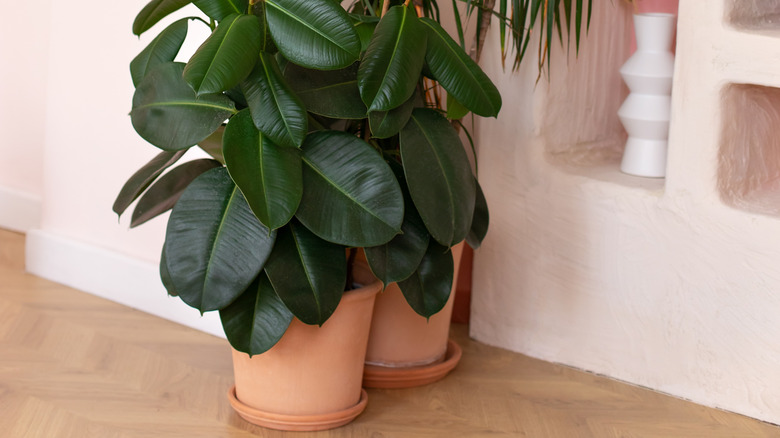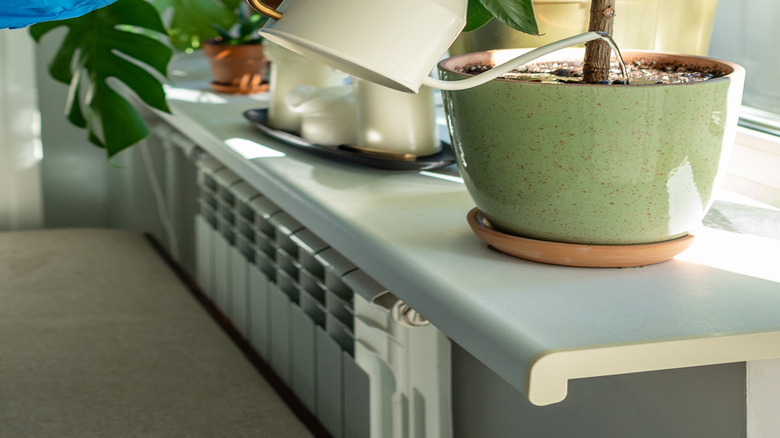Keep Your Rubber Plant Happy All Winter With These Simple Tips
The rubber plant (Ficus elastica) is a favorite among indoor gardeners for its large, bold leaves, easy care, and ability to bring a lush, tropical feel to any room. It's the low-maintenance plant you want in your home for all of its benefits, including cleaning household air, reducing volatile organic compounds (VOCs), and raising relative humidity — a particular benefit in dry winter months. The broad leaves of the plant can even help soften household noise. However, you'll only get to enjoy these pluses if you keep your heat-loving rubber plant healthy. That's something that's especially challenging during winter, when there's less sunlight and temperatures drop. To help keep your rubber plant thriving during this time, set it in a warm, bright-lit spot, let it dry out between waterings, put away those pruning shears and that fertilizer, and watch for pests.
A common mistake to avoid when caring for a rubber plant is situating it in direct sunlight — the harsh UV rays can scorch the leaves. These hardy houseplants need lots of indirect light to stay happy in winter and prefer living next to a south- or west-facing window. If you don't have that, try hanging a translucent curtain in the window to screen out the brightest beams. Rotate the plant regularly to encourage even growth. Providing your rubber plant with consistent temperatures is also important in keeping it healthy. They prefer temperatures that stay above 55 degrees Fahrenheit. Don't put your rubber plant near vents, exterior doors opened often, or drafty windows, all of which can lower the temperature.
Watering, pruning, and fertilizing your indoor rubber plant in winter
During the cold winter months, you may notice your rubber plant's growth slows down. This means it needs less water than it does when it's growing vigorously. To successfully grow a rubber tree houseplant at this time of year, allow the soil to dry out between waterings. Before you water, check the top inch of soil with your finger. When it feels dry to the touch, it's time to water. If you notice the leaves of your rubber plant drooping, water more often. However, be careful not to overwater your houseplant. They don't do well in soggy soil and may develop root rot. If it's not already planted in well-draining soil, you'll need to repot it.
You need to prune and fertilize your rubber plant far less in the winter due to its slower growth. If you fertilize during the winter at all, do so sparingly. Dilute one teaspoon of houseplant fertilizer in a gallon water and apply it to your plant every two months. You can prune lightly to shape the plant and remove any damaged or yellowing leaves to encourage new growth come spring. Wipe the dust off healthy leaves with a damp cloth. Regularly inspect the leaves of your rubber plant for pests like scale, aphids, mealybugs, thrips, and spider mites. If you find them, use an eco-friendly insecticide like neem oil or Castile soap. Mix it with water and spray it onto the leaves.

